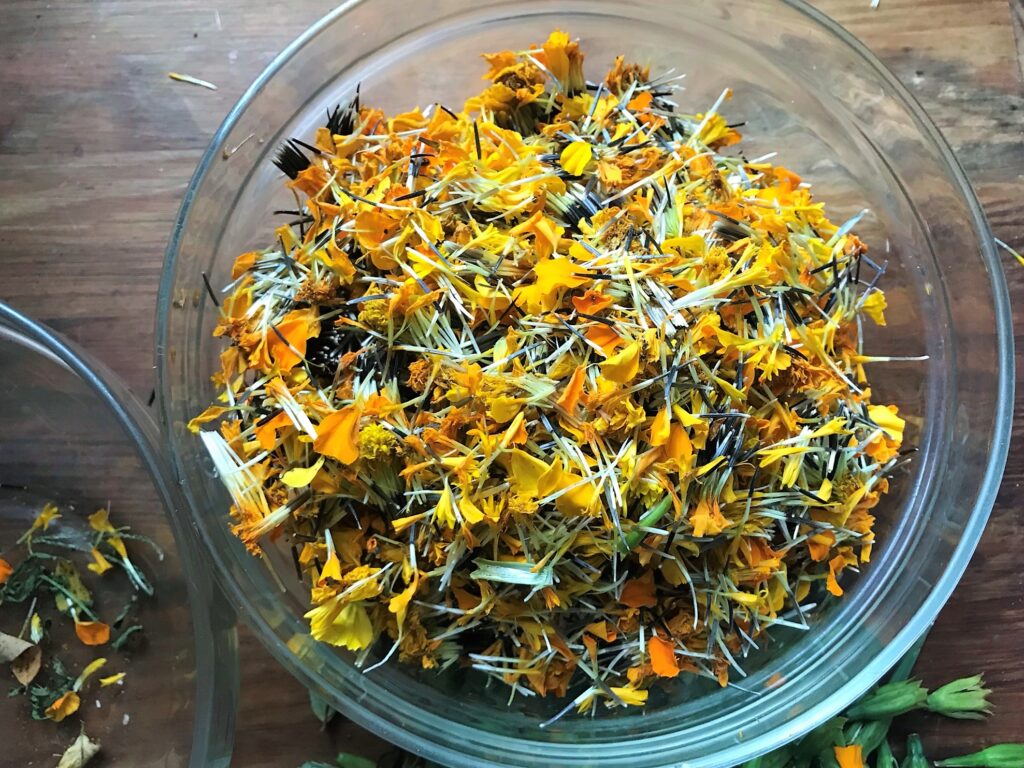
Sunny Marigolds
Marigolds are a garden mainstay. They are natural companions to vegetables in garden beds due to their ability to repel pests. They add golden color to the garden, and they repel mosquitos while attracting beneficial bees and butterflies. Yet, did you know you can dry the flowers to serve even more purposes after the gardening season is over?
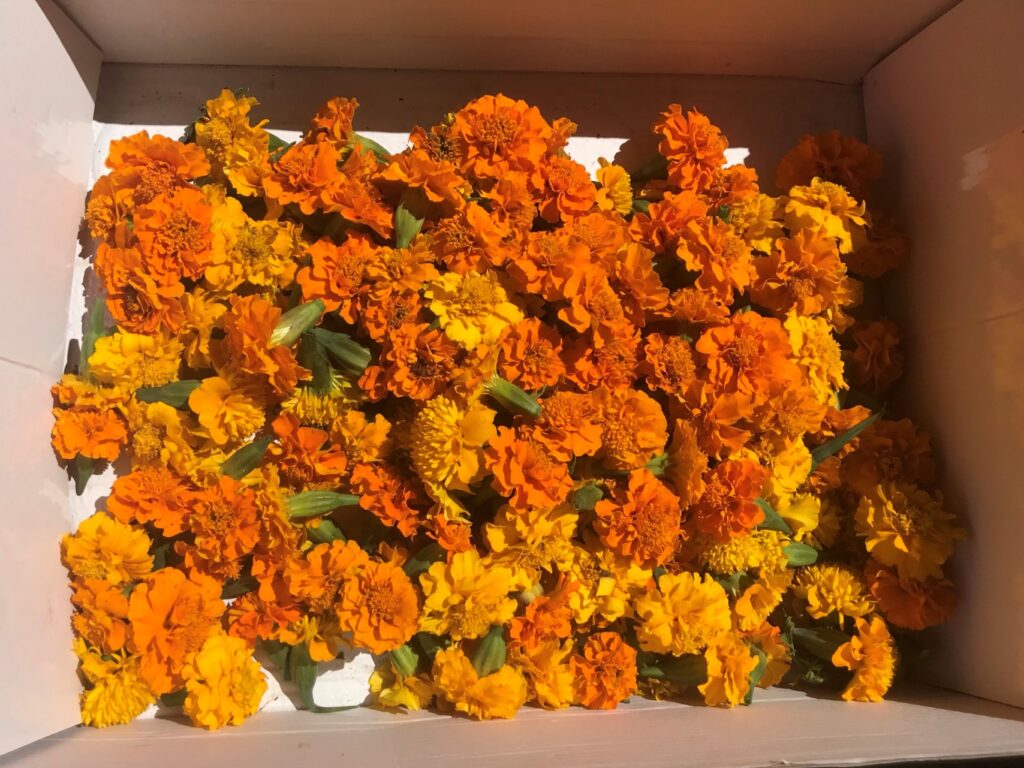
Garden Marigolds: Tagetes Genus
There has been confusion among gardeners (myself included) as to whether or not garden marigolds are the same as calendula. Calendula officinalis is native to southern Europe and has anti-bacterial and anti-viral properties. The flowers are edible and can be used to make dyes, and the whole plant can be used medicinally. The confusion between calendula and garden marigolds (tagetes genus) arises because calendula has commonly been called “pot marigold.”
Marigolds of the tagetes genus date back to the Aztecs of Mexico. The flowers were used in religious ceremonies and medicinally. Marigolds have health benefits that can prevent cancer, heal wounds, treat ulcers, provide relief from arthritis, boost the immune system, lower inflammation, and much more. The ways in which the plant is used medicinally comes in the forms of extracts, essential oils, powders, poultices, and tinctures.
Dried marigolds can also be used as a low-cost substitute for saffron. As someone who loves to make paella, I’m excited to try dried marigolds the next time I make it!
Marigolds can also be used to make dye. It would be a fun project to dye paper in marigold water or, if you are a knitter, you can dye yarn with marigolds. I look forward to planting even more marigolds next year and using the flowers to dye fabric and yarn. (I think I’ll have to relearn crocheting to take full advantage!). And wouldn’t it be fun to make paper? You could put dried marigold petals throughout, along with other dried herbs, such as lavender. The sky’s the limit here.
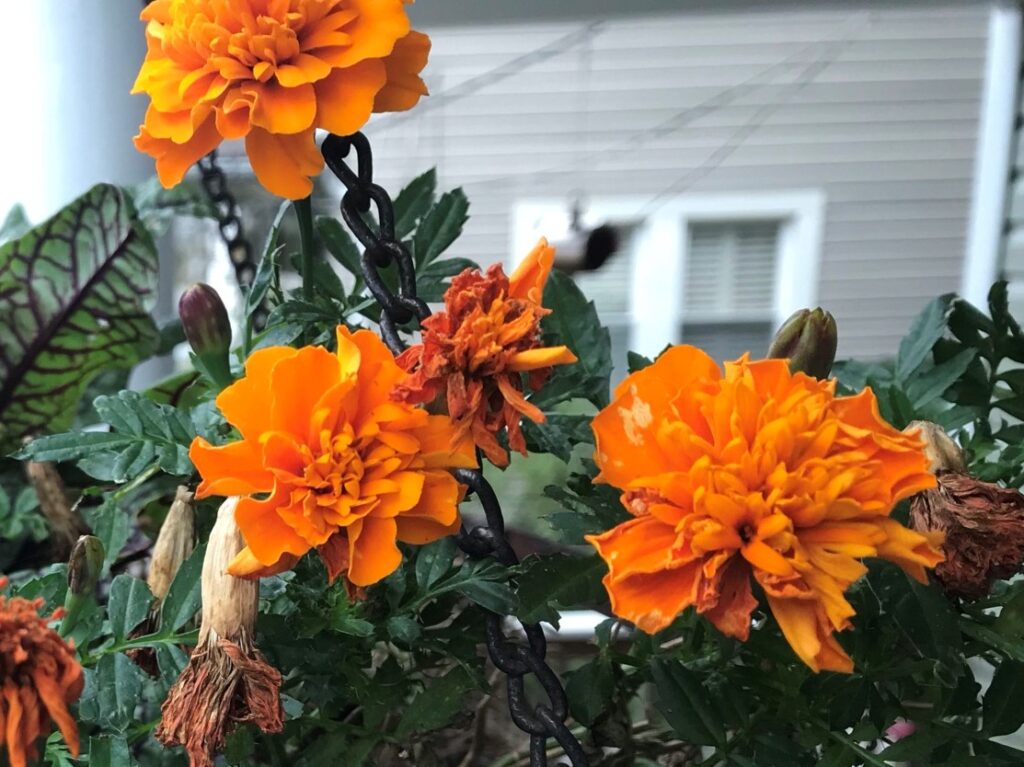
How to Dry Marigold Flowers
Start by picking as many marigold flowers as you like. I had 4-5 large, bush-like marigold plants in my raised beds. Before I pulled them out to make room for my fall garden, I picked off all of the flowers and stored them in a cardboard box. I wasn’t able to get around to dehydrating them for a few days, but they lasted fine in the shade during the day and the cool fall nights.
It is very easy to dry marigold flowers. The steps are as follows:
- Begin with your box/bowl of unwashed marigold flowers and a large, empty bowl.
- Pull apart each flower head, removing the green base and saving the long seeds and petals in the empty bowl.
- When you have pulled apart each flower, spread them on dehydrator trays. Dehydrate at 90-95 degrees Fahrenheit for about 12 hours.
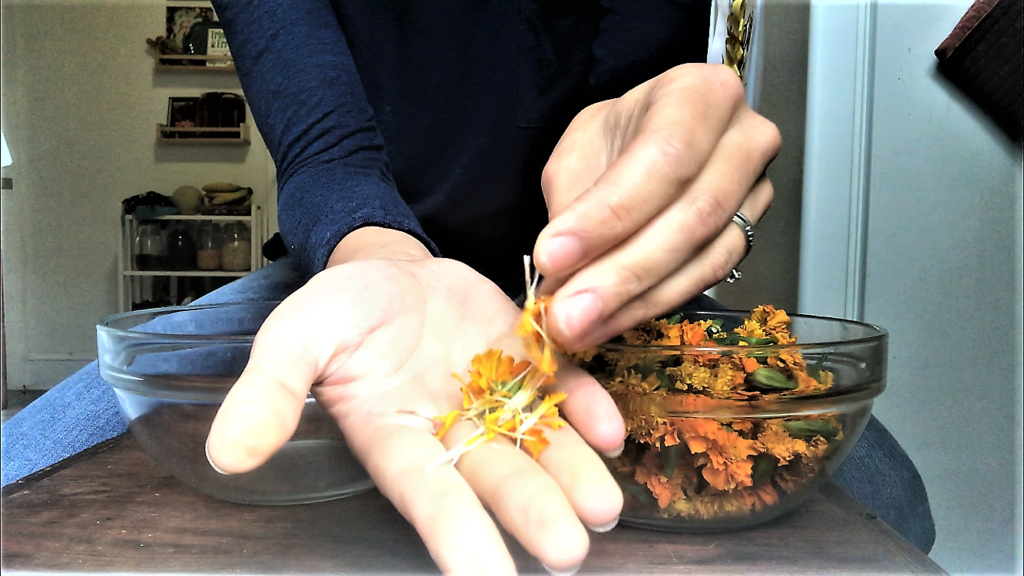
Marigold Tincture
Today I will focus on making a tincture, or tea, out of dried marigold flowers. I plan to use this tea for general immune protection, as well as if one of us comes down with a cold. The marigold flowers are good for respiratory ailments and coughs. The tea is pleasant tasting, not bitter, and would go well with raw honey to help treat colds.
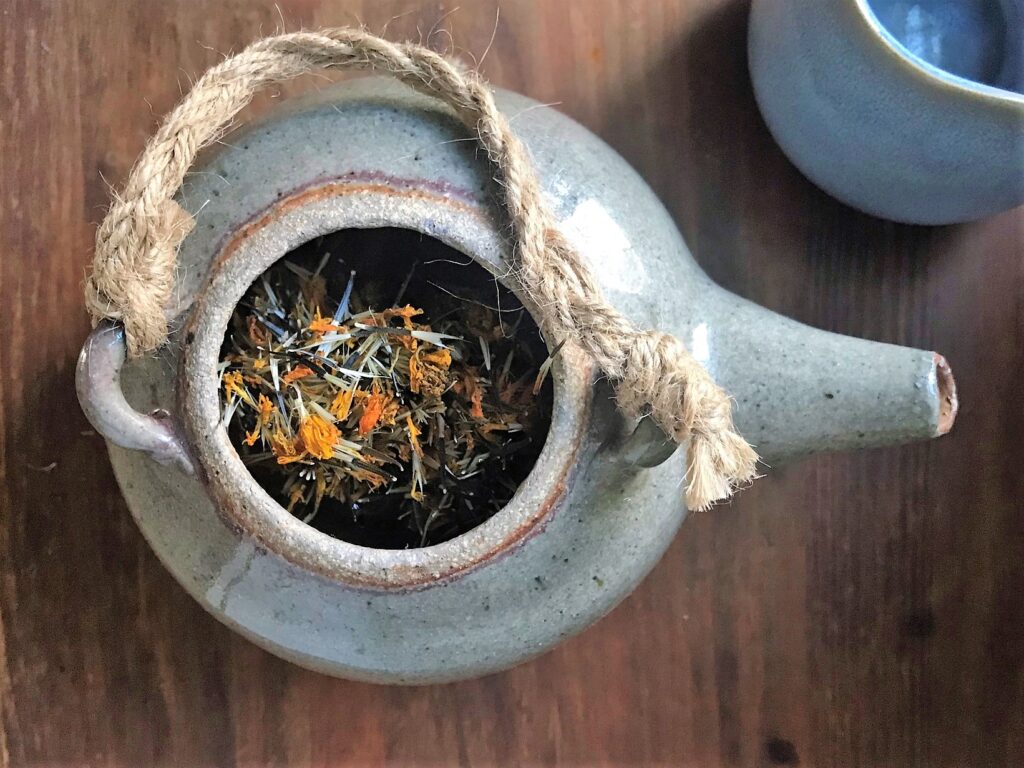
Once you have your flowers dehydrated, store them in a glass jar until you’re ready to use them. To make tea, steep one tablespoon of marigold flowers with one cup of water off the boil. Sweeten with raw honey, if you like. Remember, the tea helps respiratory illnesses and boosts your immune system when you are not sick.

I hope you found this useful.! Let me know what you plan to do with your dried marigold, and leave me a message in the comments.
See you next time,
Rebekah
U will be trying this I’m harvesting mine now!!! I plan to use them for tea’s and tinctures!!! Thanks for the info!!!